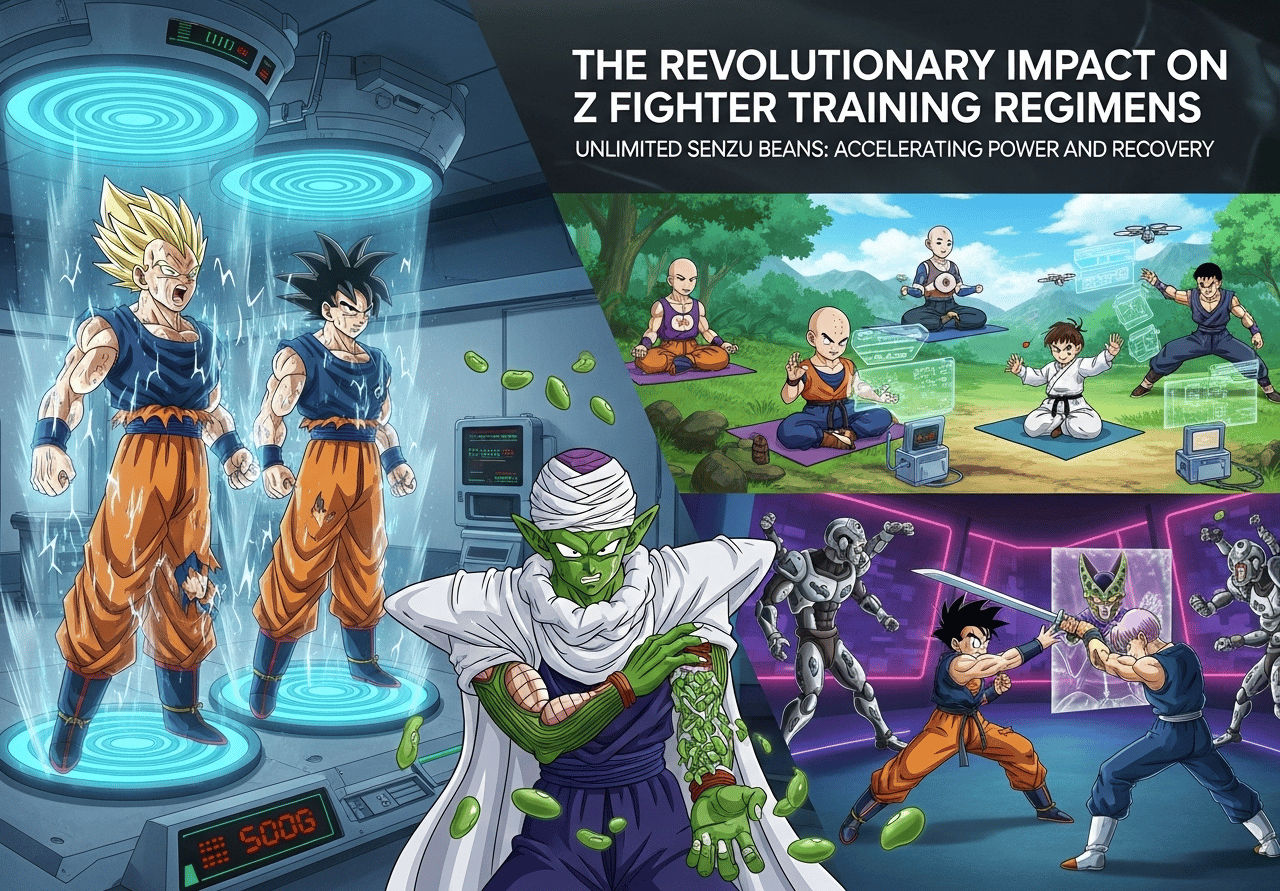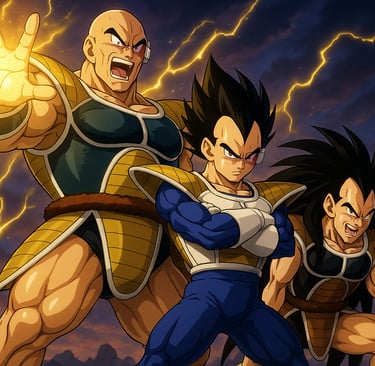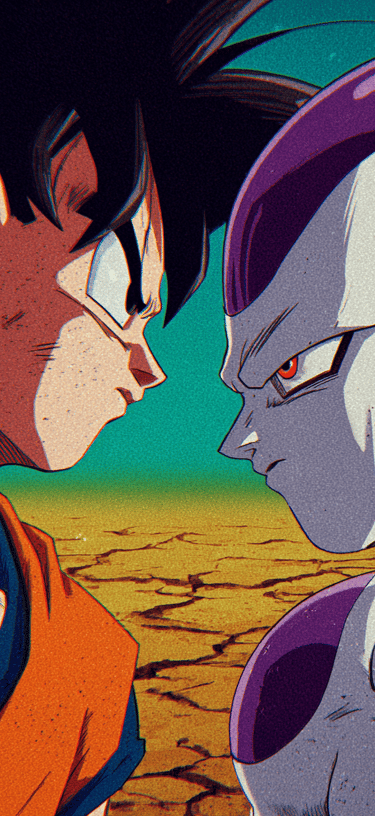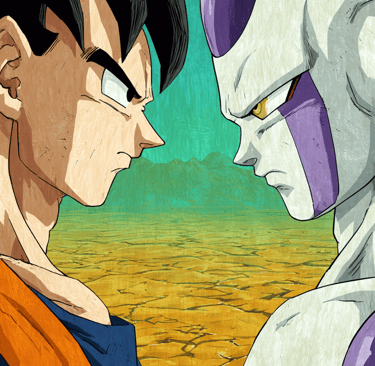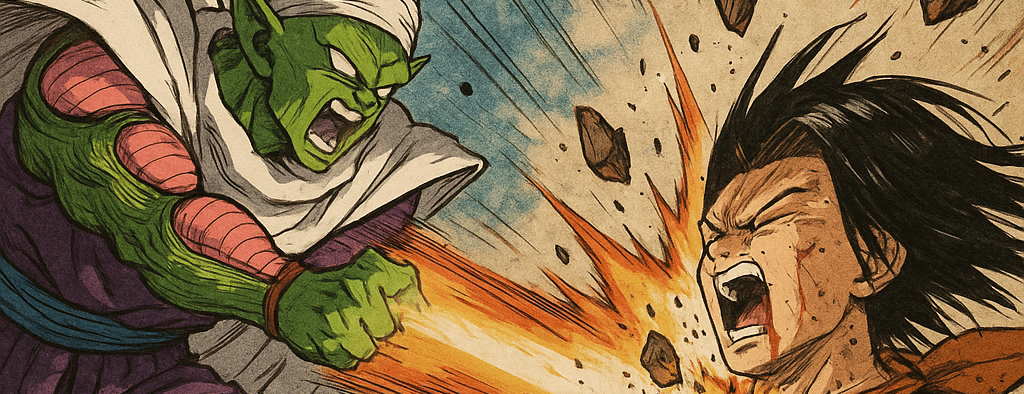Unlimited Senzu Beans Dragon Ball Z: Bulma's Scientific Revolution | Theory Analysis
DRAGONBALL BLOG - WHAT IF'S
http://Twitch.tv/spoc
10/8/20258 min read
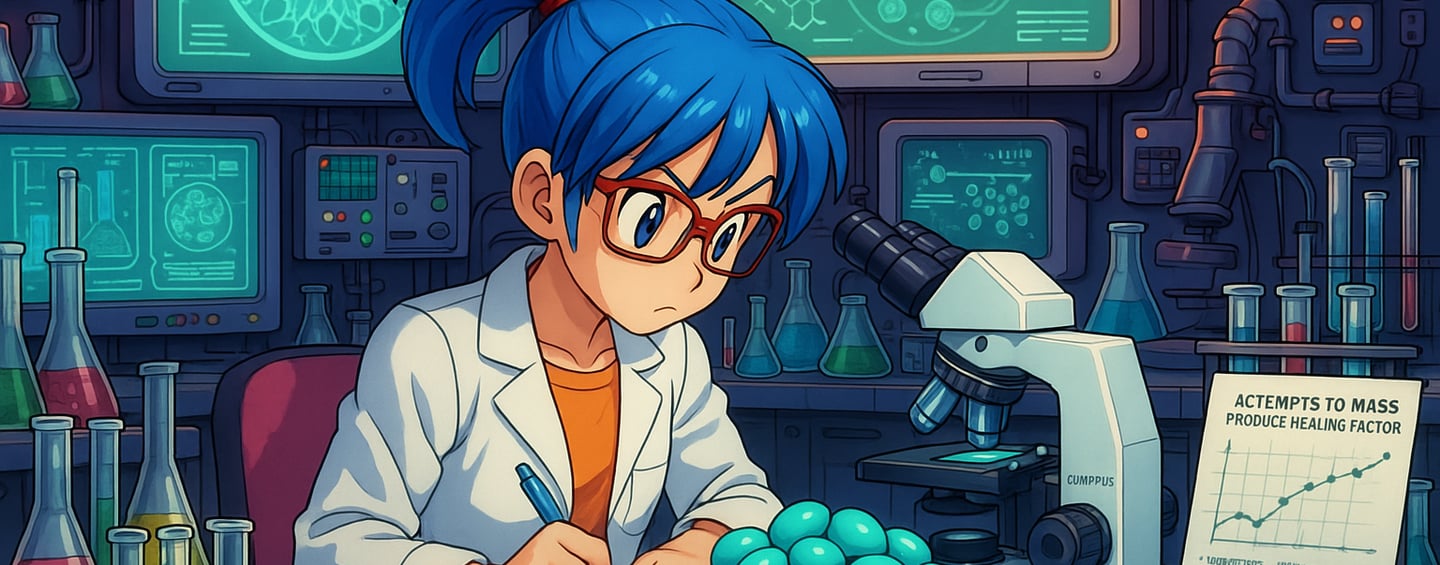

What If Bulma Mass-Produced Senzu Beans? The Ultimate Dragon Ball Z Theory Exploration
Dragon Ball Z thrives on tension — fighters pushing past their limits, near-death recoveries, and the suspense of who will stand back up when the dust clears. The series has captivated fans for decades with its high-stakes battles where a single senzu bean can mean the difference between victory and defeat. But what if we explored an alternative timeline, one where Bulma's scientific genius took center stage in a way that could fundamentally alter the Dragon Ball universe as we know it?
The Scientific Breakthrough: How Bulma Could Revolutionize Senzu Bean Production
In the canonical Dragon Ball Z storyline, senzu beans remain rare commodities, carefully grown by Korin in limited quantities atop his tower. These magical beans possess extraordinary healing properties, instantly restoring stamina and healing wounds that would otherwise take weeks or months to recover from. Their scarcity creates natural tension in the narrative—characters must decide when it's truly necessary to use one of these precious resources.
But Bulma Briefs isn't just any scientist. As the heir to the Capsule Corporation empire and a certified genius with accomplishments ranging from dragon radar technology to time machine development, she possesses both the intellectual capacity and technological resources to potentially reverse-engineer these miraculous beans.
Imagine Bulma in her advanced laboratory, using cutting-edge microscopes to analyze the cellular structure of senzu beans. She might discover that they contain unique plant compounds with regenerative properties unlike anything in Earth's botanical catalog. Through a combination of genetic sequencing, molecular analysis, and perhaps even alien technology salvaged from spacecraft that have landed on Earth, she could potentially map the complete biological profile of these healing wonders.
The next logical step would be developing a synthetic version or creating optimal growing conditions to accelerate production. Perhaps she'd design specialized hydroponic chambers that simulate the unique atmospheric conditions of Korin's Tower while accelerating growth cycles. Or maybe she'd isolate the active healing compounds and develop a method to synthesize them artificially, bypassing traditional cultivation altogether.
But here's where Bulma's protective instincts would come into play—she wouldn't want this technology falling into the wrong hands. Using DNA recognition technology (something well within her capabilities), she could engineer these mass-produced senzu beans to activate only when consumed by individuals with specific genetic markers—namely, the Z Fighters and their allies.
The Revolutionary Impact on Z Fighter Training Regimens
With unlimited access to senzu beans, the training potential for Earth's defenders would increase exponentially. Traditional Saiyan training already relies on the principle that recovery from near-death experiences triggers substantial power increases—a biological feature known as "Zenkai boosts" that makes Saiyans uniquely adaptable to combat.
Goku and Vegeta, always pushing the boundaries of their Saiyan physiology, could implement training protocols that would be considered suicidal under normal circumstances. Imagine training sessions in 500x Earth's gravity until their bodies literally begin to break down, only to consume a senzu bean and immediately resume at even higher intensity. The rate of power progression would be unprecedented.
Piccolo, with his Namekian regenerative abilities already impressive, could push his body beyond normal limits knowing that any damage could be instantly reversed. Even the human Z Fighters like Krillin, Tien, and Yamcha—often left behind in the power scaling—might find new potential for growth through extreme training methods previously too dangerous to attempt.
Young warriors like Gohan and Future Trunks could undergo accelerated training programs, compressing years of combat experience into months. The traditional training arcs that span long periods in the series could be dramatically shortened, allowing fighters to reach new power plateaus in record time.
Strategic Advantages in Major Dragon Ball Z Story Arcs
How would unlimited senzu beans affect the major conflicts throughout Dragon Ball Z? Let's analyze some key saga turning points:
Saiyan Invasion Scenario
When Vegeta and Nappa arrived on Earth, the Z Fighters were severely outmatched. With mass-produced senzu beans, the initial confrontation might have played out very differently. Yamcha, Tien, and Chiaotzu might have survived their encounters, repeatedly healing and rejoining the battle. The fight would become one of attrition rather than overwhelming power difference.
Goku's arrival after training with King Kai would still be pivotal, but he wouldn't be fighting alone against exhausted allies. Instead, he'd lead a coordinated team effort against the Saiyan invaders. While Vegeta's power level would still pose a significant threat, the ability to heal repeatedly would give Earth's defenders a fighting chance they never had in the original timeline.
Frieza Saga Reimagined
On Namek, limited senzu beans created numerous tension points—Vegeta exploiting Dende's healing abilities, Goku recovering from the gravity training accident, and the critical moments after Krillin's injury. With Bulma's mass-produced beans, the Z Fighters could have maintained peak fighting condition throughout the entire conflict.
Imagine Vegeta, Gohan, and Krillin fighting the Ginyu Force with the ability to heal after each encounter. Captain Ginyu's body-switching technique would still pose a unique threat, but the overall dynamic would shift toward the Z Fighters' favor much earlier. When Frieza finally entered the battle personally, he would face a team of fully-healed warriors rather than combatants already worn down by previous fights.
Goku's transformation into a Super Saiyan might still occur following Krillin's death, but the lead-up circumstances would be dramatically different. Perhaps Frieza, recognizing the threat of opponents who continually recover, would resort to more desperate and destructive tactics earlier in the conflict.
Android and Cell Saga Strategic Shifts
The three-year preparation period before the Androids' arrival would become even more productive with enhanced recovery capabilities. The Z Fighters might reach power levels far beyond what we saw in the original timeline, potentially changing the power dynamic when Dr. Gero's creations finally emerged.
Cell's absorption of Androids 17 and 18 created some of the series' most tense moments. With unlimited healing, the Z Fighters might have been able to mount more aggressive defenses against Cell's evolution. Piccolo and Android 17's battle could have continued with repeated healings, potentially preventing Cell from achieving his perfect form altogether.
The Cell Games would transform from a tournament with limited recovery options to an endurance test where strategy and technique would take precedence over raw stamina. Cell's regenerative abilities would still make him a formidable opponent, but the playing field would be more level with Z Fighters able to recover from his attacks.
Buu Saga Complexity
The Majin Buu saga presents perhaps the most interesting scenario. Babidi's mind control over Vegeta was partially successful because of the Saiyan prince's frustration over Goku's superior power. With enhanced training capabilities through constant healing, would Vegeta have closed that gap sooner? Or would both Saiyans have reached such extraordinary power levels that Majin Buu's revival might have been prevented entirely?
Supreme Kai's warnings about Buu would still create urgency, but the Z Fighters' approach might be more direct and less desperate. The fusion techniques (both Potara and Fusion Dance) might still be introduced, but as strategic options rather than last-resort necessities.
Buu's ability to absorb fighters and regenerate from almost any damage would remain problematic, but the Z Fighters' enhanced recovery would allow for more experimental and risky combat strategies that might eventually reveal weaknesses in the magical being's defenses.
The Narrative Consequences: What Would We Lose and Gain?
While unlimited senzu beans would provide tactical advantages, they would fundamentally alter the narrative structure that makes Dragon Ball Z compelling. The series thrives on moments where heroes must dig deep within themselves when all physical resources are exhausted. Would Gohan have discovered his hidden potential against Cell if physical recovery was always just a bean away? Would Goku's sacrifices carry the same emotional weight if death became even more of a temporary inconvenience?
The dramatic tension of watching a fighter struggle to stand after a devastating blow would be diminished. The strategic decisions about when to use limited resources would disappear. In their place, we might see more complex battle strategies, more extreme training methods, and perhaps more focus on enemies who can counter or nullify the healing advantage.
Dragon Ball Z's themes of perseverance, self-improvement, and overcoming limitations might shift toward themes of scientific advancement, strategic preparation, and the ethics of enhanced recovery. Bulma's role would expand from support character to essential strategic asset, potentially creating interesting narrative tensions between the scientific and martial aspects of Earth's defense.
Ethical Dilemmas of Controlled Healing Technology
Bulma's decision to restrict senzu bean effectiveness to Z Fighter DNA would create fascinating ethical questions. Would this technology eventually extend to protecting all of Earth's inhabitants, or would it remain a privilege for the fighting elite? Would other scientific minds like Dr. Brief or even former villains like Dr. Gero attempt to develop competing technologies?
The Z Fighters themselves might debate the morality of their advantage. Characters like Goku, who value fair fights and testing their limits, might feel conflicted about having access to healing that their opponents don't. Vegeta's pride might resist reliance on "artificial" advantages, preferring to earn power through traditional Saiyan methods.
There's also the question of how the Gods and Kais would view this development. Would they see it as mortals overstepping their bounds by manipulating natural healing processes? Or would they recognize it as the kind of innovation that makes Earth and its defenders unique in the universe?
Beyond the Original Series: Impact on Dragon Ball Super Storylines
Extending this thought experiment into Dragon Ball Super territory opens even more possibilities. Would Beerus and Whis be impressed or concerned by Earth's technological advancement? How would the Tournament of Power rules adapt to account for fighters with enhanced recovery capabilities?
The introduction of Gods of Destruction, Angels, and the multiverse concept might provide natural limitations to Bulma's technology. Perhaps divine energy or certain universal laws would supersede Earth science, creating new boundaries for the Z Fighters to overcome.
The "Future Trunks" timeline presents another interesting case study. In a world devastated by the Androids where Bulma focused all her scientific efforts on time travel, the development of mass-produced senzu beans might have created an entirely different outcome for that reality.
Conclusion: A Different Kind of Dragon Ball Story
Mass-produced senzu beans would transform Dragon Ball Z from a story about overcoming physical limitations into one about leveraging technological advantages and exploring the boundaries between natural and enhanced abilities. Battles would become longer, more strategic affairs where endurance gives way to technique and tactical thinking.
While we might lose some of the raw emotional impact of seeing our heroes pushed to their absolute limits, we would gain a more nuanced exploration of how technology and biology intersect in a world of martial arts and ki manipulation. Bulma's role would expand from occasional support to essential strategic partner, highlighting the value of scientific innovation alongside physical training.
In the end, Dragon Ball Z's core message about self-improvement and protecting what matters would remain intact—it would simply manifest through different narrative mechanisms. The journey of becoming stronger would continue, but with new questions about what "strength" truly means in a world where science can heal any wound.
For fans of alternative Dragon Ball theories, speculative fiction about anime power systems, and explorations of how technology might transform martial arts fantasy worlds, this thought experiment offers a fascinating glimpse into a road not taken in one of anime's most beloved franchises.
Written by Spoc, longtime Dragon Ball analyst and theorist specializing in alternative timeline exploration and power scaling analysis. When he's not developing comprehensive Dragon Ball Z hypothetical scenarios, he's connecting with fellow fans and sharing new perspectives on the series we all love.


